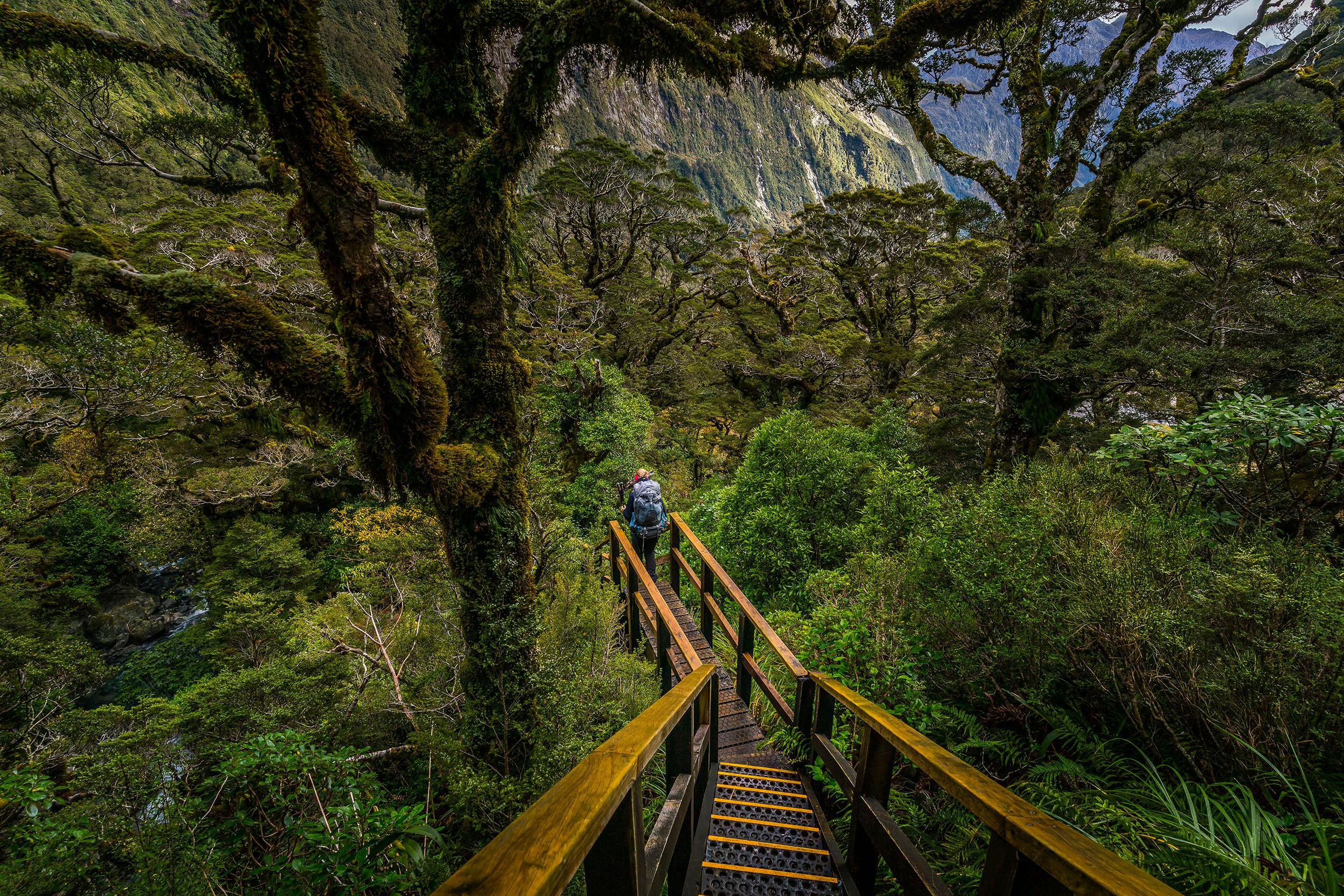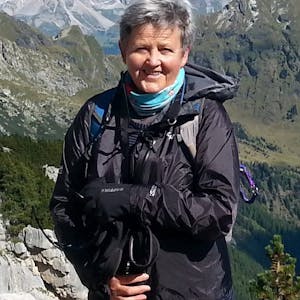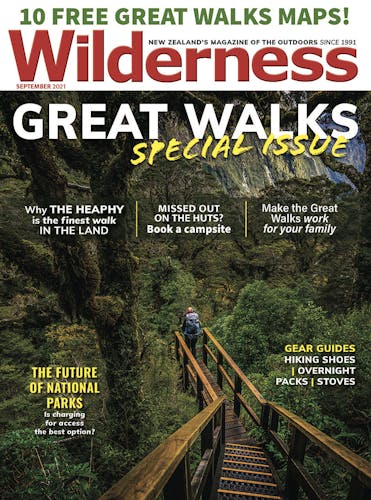After first walking the Milford Track in 1984, Kathy Ombler returned in February this year. She found bigger huts, new bridges, and more birdlife. The landscape remained spectacular and dynamic.
Climbing Mackinnon Pass with an alpine plant guru certainly took my mind off the physical effort. Dr (now Sir) Alan Mark and I pottered uphill, stopping every few metres for him to show me another gentian, celmisia, ourisia, raoulia and more.
This was 1984. The sun was shining, the views were amazing, and I felt lucky to be walking the Milford Track with Alan in our group. He taught me a lot; if only I could remember it.
This year, I climbed the pass in misty gloom with no guide to distract me. My own party included some learned botanists but they’d set off much earlier. There was absolutely no view on the damp, freezing pass and I was glad to find a modern, enclosed shelter rather than 1984’s rough A-frame shack. Trampers heated soups and brews on the gas cookers inside and, mindful of our hut warden’s advice not to wait around for the weather to clear, quickly headed down. It was good advice because just below the pass there was warm sunshine, also I was lucky enough to spot a tuke/rock wren, flitting over the shrubs. This species is endangered and just a few pairs live around the pass. The long descent into the Arthur Valley was more of a gradual zigzag than the steep knee-jerker I recall from 37 years before.
What else has changed? The huts are bigger and on safer sites, as nature has toyed with man-made stuff and geoscientists have learned more about mountain behaviours. In 1984, we stayed at Clinton Forks Hut, close to the river with a pleasant outlook but later undermined when the river flooded. This year we stayed at the newer Clinton Hut, set further from the river with a spacious deck for catching the afternoon sun. Mintaro Hut, in 1984, had no deck and few windows. That was the style back then. But its location was spectacularly scenic and I remember thinking, as the sandflies and I gathered outside, with mountains all around, how sad it was that the hut was so dark and gloomy. Huts now, including the newer Mintaro, built in 1987, are designed with bigger windows.
But this February there was another issue at Mintaro. The view from my bunk looked directly up to the rockslide that GNS scientists believe might demolish the hut in the event of an earthquake. I tried not to think about the big one, apparently overdue. There’ll be no such worries for next season’s walkers; a new Mintaro Hut has been built 2km up valley, with a grand outlook through many double-glazed windows and deemed safe from potential rock slides.
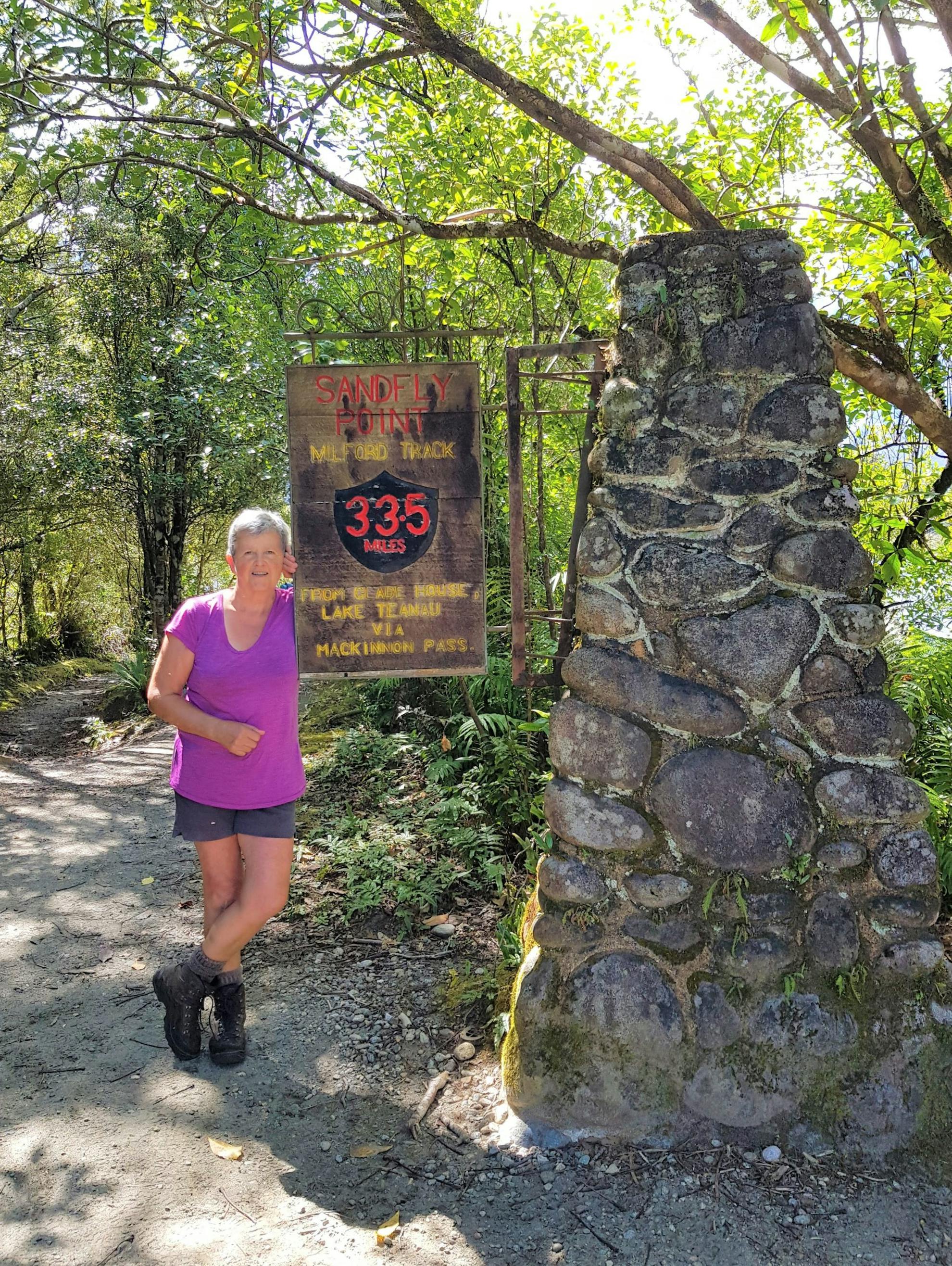
Milford Track huts all sleep 40 these days. In 1984 they slept 16, with spare bunks set aside to accommodate additional walkers when the track flooded. These days, trampers are held at each hut in the case of flooding and the day’s next intake of trampers is cancelled. Although, depending on where the flooding occurs, trampers in the last hut, Dumpling, might be flown out to Milford Sound to keep the bookings flowing.
In February, it rained and we were asked to wait at Clinton while DOC checked the conditions. Happily, we were given the all clear to carry on. It rained all the way to Mintaro and the power, majesty and scale of the landscape blew me away. Waterfalls dropped off the mountainsides, their sound roared around the valley. Rivers rushed to carry their swollen loads. In the evening, it cleared and the roaring stopped.
“Someone’s turned the waterfalls off,” joked one tramper.
In 1984, we had sauntered up the valley in sunshine, beautiful yes, but somehow not nearly so memorable.
The Sutherland Falls are still magnificent, although the side track to view them seemed longer and steeper (it’s not, my legs are older). The track is actually much improved, with two new suspension bridges built over the surging upper Arthur River following a massive rockfall in 2012 that closed the sidetrack for a year. Sitting at the base of the three-tiered 580m falls is an unmissable experience. And no longer is there risk in leaving packs beside the track at the mercy of marauding kea while you detour to the falls. Today’s freedom walkers are invited to stow their packs in a shelter beside the private Quinton Lodge.
Kea, with their raucous, often thieving antics, were the avian stars in 1984. They still are.
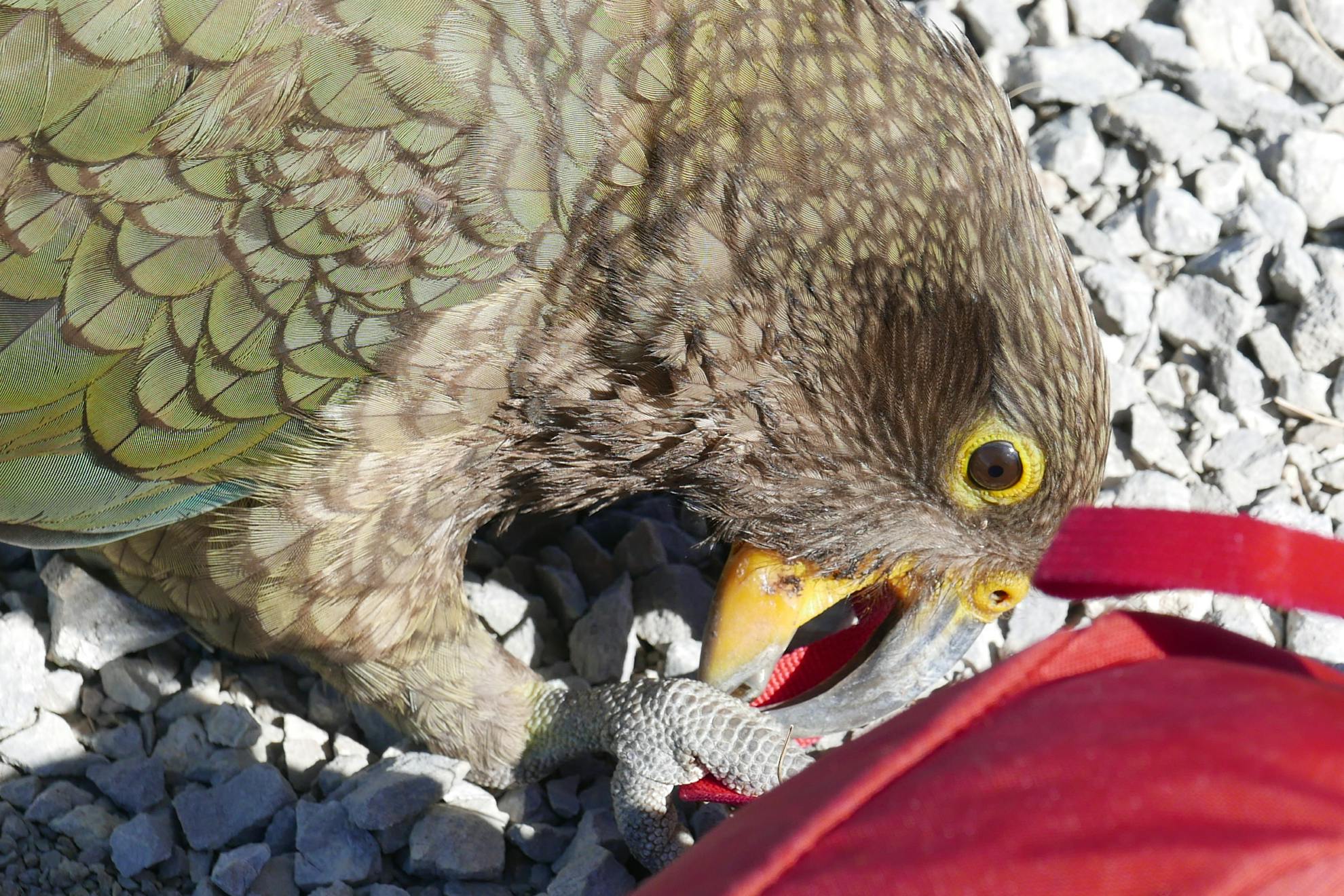
They’re extremely curious and, said Mintaro Hut warden Simone Goldsmith, they have the intelligence of a four-year-old.
We’d been warned. Nevertheless, next morning there was a curious kea, tearing with its very sharp beak at an expensive PLB which it had snatched when its owner wasn’t looking. The PLB was rescued, with some difficulty.
They may be in your face and obvious, but the kea population has actually diminished since 1984. “We used to see 70 or 80 up on the pass, now if we see 10 we think it’s pretty good,” says the recently retired Ken Bradley, who worked on the Milford Track for more than 40 years.
There’s also good news. “We’ve had 20 years of predator control now and, kea aside, the birdlife is incredible,” he says. “We see all the little birds, robins, tomtits, bellbirds, and flocks of tūī and kākā and kererū, and there are more whio in the rivers. It’s just great.”
Pāteke (brown teal), which compete with whio for the dubious honour of being New Zealand’s rarest waterfowl, are also nearing self-sustaining population size in the Arthur River since several translocations over the past 12 years.
In March, after the release of 60 birds, DOC senior ranger Andrew Smart said consistent and landscape-scale predator control, which includes an extensive trapping network and targeted use of 1080, has kept predator numbers in check.
In 1984, I saw no whio. This year our group (birders as well as botanists) counted several, in both valleys. Between us, we also heard kiwi, saw lots of those ‘little birds’ as mentioned by Ken, plus my rock wren and, happily, one small flock of kea. We all came across the ubiquitous weka, as much a threat to personal belongings as any alpine parrot.
Talking of noisy flying things: 37 years ago I recall few, if any, aircraft buzzing above the track. Since then, DOC surveys have recorded walkers being annoyed by intrusive aircraft noise. Small wonder, with the number of scenic flights normally operating in the vicinity. In post-Covid February the skies were, again, largely silent.
To be fair, most aircraft activity on the Milford is helicopter use for hut servicing, predator control and track maintenance. The latter is an ongoing task, exacerbated by storm damage such as happened on a massive scale in February 2020.
This year we saw the aftermath of that weather bomb, which devastated much of the Milford, Hollyford and Routeburn tracks. In the Arthur Valley, huge trees lay strewn along swathes of riverside devastation. We navigated through it on several repaired sections of track and new bridges.
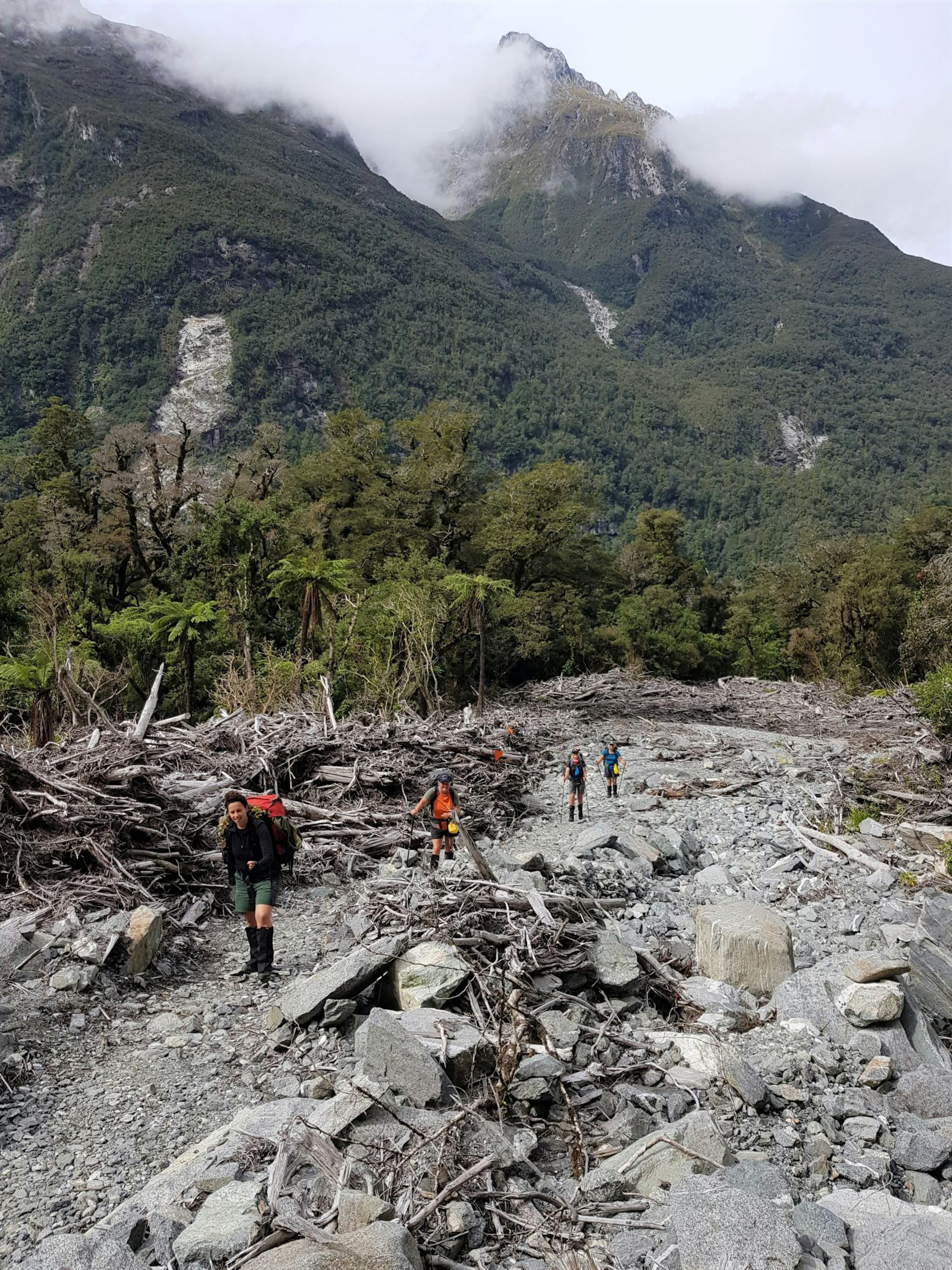
There is no doubt the Milford Track traverses a dynamic landscape. Keeping huts safe and the track open is a constant battle. With global warming, even more frequent and intense storms are predicted.
Last year, DOC released a Climate Change Adaptation Action Plan aimed at identifying and managing risks and vulnerabilities. “You don’t want to be fixing something and the next storm comes along and takes it out again,” says DOC’s climate change programme manager Sam Parsons. “We know how to build for these environments; we just need to do it more strategically.”
Last year, DOC asked NIWA to undertake a climate change projections assessment to help guide repairs of the devastated tracks. The Milford Track’s replacement Giant Gate suspension bridge, with its longer span and greater flood clearance, is an example of building more resilient infrastructure.
But, it gets even more convoluted. According to climate change legislation, DOC is required to reduce its carbon footprint. Helicopters are a major source of the department’s current greenhouse gas emissions, yet they are key to fixing storm-damaged tracks and for predator control. The biodiversity restoration that we witnessed on the track this year could be compromised as warmer temperatures extend pest habitats and increase mast seeding events, leading to higher stoat numbers. Legislation aside, DOC has a vested interest in cutting carbon emissions.
Earlier this year, the department’s procurement advisor, Laura Cendak, published a report discussing measures being taken to reduce its carbon footprint. This included a focus on predator control.
“We’re starting to invest in new technologies that can help lower carbon emissions, for example, biodegradable pest traps that won’t need regular checking, and drones for aerial drops of 1080 instead of helicopters.”
What, one wonders, will the next 37 years bring to the Milford Track?
In the meantime, the final day’s walk is still a mixed blessing, as it was in 1984. You don’t want to rush because the landscape is stunning but there’s a boat to catch. And you want to time your arrival at the end just right because it’s named Sandfly Point for a reason. You might also make time for the obligatory photo at the sign that reads: Milford Track 33.5 miles.
It’s a quaint nod to the huge history of this track that distance markers still record the imperial mile. Long may it continue.





